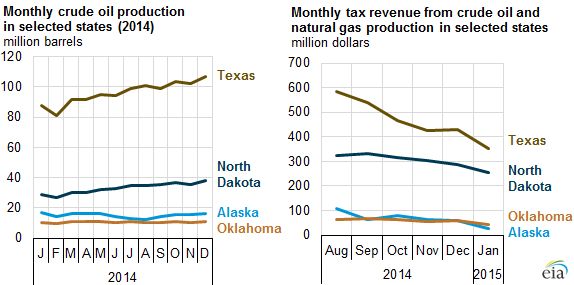The U.S. Department of the Interior announces new guidelines for hydraulic fracturing on federal land
Earlier today, the Department of Interior (DOI) released a final rule to update regulations governing hydraulic fracturing on public and American Indian lands after four years of consideration. Secretary of the Interior Sally Jewell commented, “Many of the regulations on the books at the Interior Department have not kept pace with advances in technology and modern drilling methods.” This new rule is an attempt to bring regulations up-to-date with the U.S. energy revolution, according to the DOI’s press release.
According to the text of the final rule, which can be read in its entirety here, operators planning to conduct hydraulic fracturing on federal land must now follow these new requirements:
- Submit detailed information about the proposed operation, including wellbore geology, the location of faults and fractures, the depths of all usable water, estimated volume of fluid to be used, and estimated direction and length of fractures, to the BLM (Bureau of Land Management) with the APD or a Sundry Notice and Report on Wells (Form 3160-5) as a Notice of Intent (NOI) to hydraulically fracture an existing well;
- Design and implement a casing and cementing program that follows best practices and meets performance standards to protect and isolate usable water, defined generally as those waters containing less than 10,000 parts per million of total dissolved solids;
- Monitor cementing operations during well construction;
- Take remedial action if there are indications of inadequate cementing, and demonstrate to the BLM that the remedial action was successful;
- Perform a successful mechanical integrity test prior to the hydraulic fracturing operation;
- Monitor annulus pressure during a hydraulic fracturing operation;
- Manage recovered fluids in rigid enclosed, covered or netted and screened above-ground storage tanks, with very limited exceptions that must be approved on a case-by-case basis;
- Disclose the chemicals used to the BLM and the public, with limited exceptions for material demonstrated through affidavit to be trade secrets;
- Provide documentation of all of the above actions to the BLM.
Secretary Jewell says that this new rule is hoped to protect the nation’s groundwater and ensure responsible development while protecting public land resources. “That is good for the public and good for industry. It is also good government,” said Jewell.
The Industry Disagrees
Despite Jewell’s assertion of good governance, the DOI’s final rule sparked an immediate backlash in Congress and the energy industry. Two oil industry groups immediately sued to challenge the rules, calling them “a reaction to unsubstantiated concerns,” reports Politico. Meanwhile, 27 Senate Republicans introduced legislation to block the new regulations from taking effect.
“If Interior was half as interested in new production as it is in new regulation, our nation would be in a far better place,” said Alaska Republican Sen. Lisa Murkowski, who chairs the Energy and Natural Resources Committee. Alaska has been hit especially hard as oil prices remain low – 90% of the state’s operating budget comes from crude oil production, and oil tax revenues have declined by 76% to $26 million.
Erik Milito, the American Petroleum Institute’s upstream operations director, issued a statement saying the new rule would create a new barrier to already declining production growth on federal land. Senate Republicans filed legislation against the new rule Thursday, not even waiting for the DOI to file its final rule.
“The political reaction is not surprising,” said Jewell. “We’re confident from the process we went through that we’re doing the right thing for the American people,” she added while speaking with reporters.
Important disclosures: The information provided herein is believed to be reliable; however, EnerCom, Inc. makes no representation or warranty as to its completeness or accuracy. EnerCom’s conclusions are based upon information gathered from sources deemed to be reliable. This note is not intended as an offer or solicitation for the purchase or sale of any security or financial instrument of any company mentioned in this note. This note was prepared for general circulation and does not provide investment recommendations specific to individual investors. All readers of the note must make their own investment decisions based upon their specific investment objectives and financial situation utilizing their own financial advisors as they deem necessary. Investors should consider a company’s entire financial and operational structure in making any investment decisions. Past performance of any company discussed in this note should not be taken as an indication or guarantee of future results. EnerCom is a multi-disciplined management consulting services firm that regularly intends to seek business, or currently may be undertaking business, with companies covered on Oil & Gas 360®, and thereby seeks to receive compensation from these companies for its services. In addition, EnerCom, or its principals or employees, may have an economic interest in any of these companies. As a result, readers of EnerCom’s Oil & Gas 360® should be aware that the firm may have a conflict of interest that could affect the objectivity of this note. The company or companies covered in this note did not review the note prior to publication.








